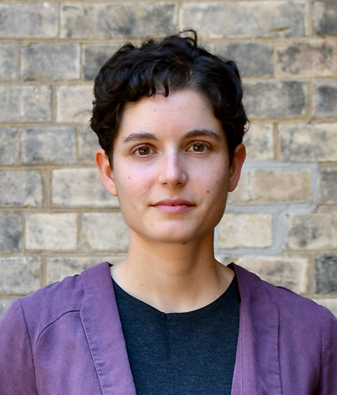CITA faculty Maya Fishbach receives this year’s Annie Jump Cannon Award in Astronomy
The American Astronomical Society (AAS), a major international organization of professional astronomers, announced today the recipients of some of its 2025 prizes for outstanding achievements in research and education.
This year the prestigious Annie Jump Cannon Award in Astronomy was presented to CITA faculty Maya Fishbach for her “major contributions to the field of gravitational-wave astrophysics and cosmology, including inference of the black-hole merger rate and its implications for the formation of stellar-mass black holes, their host galaxies, and the expansion history of the universe”. The Annie Jump Cannon Award is given every year for outstanding research and promise for future research to a North American female astronomer within five years of receiving her PhD.
In response to the news Dr. Fishbach remarked: “It’s incredibly exciting to receive the Annie Jump Cannon Award for my research in gravitational-wave astrophysics! I am honored to join the ranks of previous recipients, whom I greatly respect and admire. I am grateful to all my mentors and collaborators for their support and friendship throughout my research journey, and especially to the LIGO-Virgo-KAGRA Collaboration for detecting gravitational waves. We still have a lot to learn about our Universe from gravitational waves, and I look forward to many more discoveries in the coming years.”
Fishbach is internationally recognized for her leadership within the LIGO Scientific Collaboration. She chairs the ‘Rates & Populations’ group tasked with inferring the astrophysical implications of the gravitational-wave source population and has made significant contributions to 14 LIGO Collaboration papers and co-authored 37 additional, non-LIGO publications. In just the past 6 years Fishbach has given 26 invited conference talks, 15 public talks, and 34 invited seminars or colloquia at departments around the world.
Richard Bond, an internationally celebrated astrophysicist and long-standing CITA faculty member commented on Dr. Fishbach’s distinction: “The young scholar Maya Fishbach has already emerged as a world leader in the astoundingly exciting field of gravitational-wave and multi-messenger astrophysics. Her pioneering research into the astrophysical and cosmological implications of merging black holes is bringing us closer to understanding the building blocks of our Universe, from the lives and deaths of stars to the origin of heavy elements and the cosmic expansion history.”
Fishbach is known for performing the first “dark standard siren” measurement of the Hubble constant with gravitational waves and a galaxy catalog (Fishbach et al. 2019); discovering a gravitational-wave signature of pair-instability supernovae (Fishbach & Holz 2017); proposing the use of black hole spins to distinguish whether black holes grow from previous mergers (Fishbach, Holz & Farr 2017; Fishbach, Kimball & Kalogera 2022); and measuring the redshift evolution of the black hole merger rate for the first time (Fishbach, Holz & Farr 2018), as well as its implications for delay times (Fishbach & Kalogera 2022), the star formation rate, and the history of globular clusters (Fishbach & Fragione 2023).
Dr. Fishbach’s groundbreaking research has already been distinguished by prestigious honors and awards such as the 2023 John Charles Polanyi Prize for “excellence and potential of research in Physics” and the 2024 Sloan Research Fellowship from the Alfred P. Sloan Foundation. Fishbach’s work has also garnered significant public interest and has been featured over 20 times in the media, including a full-length interview by Alan Alda on his ‘Science Clear & Vivid’ podcast.
Read more: AAS Grants and Prizes
Contact:
Lyuba Encheva
Communications and Events, CITA
Email: lyuba@cita.utoronto.ca
